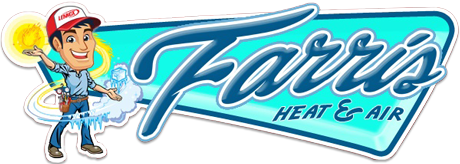
You shouldn’t need to give up comfort or drain your wallet to keep your house at a refreshing setting during hot days.
But what is the right temp, exactly? We discuss suggestions from energy specialists so you can select the best temp for your residence.
Here’s what we recommend for the most energy-efficient setting for air conditioning in Bartlesville.
Recommended Thermostat Settings for Summer
Most households find using the thermostat at 72-73 degrees provides ideal comfort. However, if there’s a huge difference between your inside and outdoor temps, your electrical costs will be greater.
This is our advice based on the U.S. Department of Energy (DOE) and ENERGY STAR®.
While at home: 78 degrees. While that seems hot, there are approaches you can keep your residence refreshing without having the AC going frequently.
Keeping windows and window treatments closed during the day keeps cold air where it belongs—inside. Some window coverings, including honeycomb shades or plantation shutters, are made to offer extra insulation and improved energy conservation.
If you have ceiling fans in your home, the DOE says you can raise thermostat temperatures about 4 degrees higher without giving up comfort. That’s because they cool through a windchill effect. Because they cool people, not spaces, turn them off when you exit a room.
If 78 degrees still feels too uncomfortable initially, try doing an experiment for approximately a week. Get started by increasing your temperature to 78 degrees while you’re at your house. Then, steadily lower it while using the tips above. You may be astonished at how refreshed you feel at a warmer temperature setting.
While away: 88 degrees. There’s no reason to keep the AC going all day while your house is vacant. Turning the setting 7–10 degrees hotter can save you an estimated 5–15% on your electricity expenses, according to the DOE.
When you arrive home, don’t be tempted to put your thermostat colder than 78 to cool your house more rapidly. This isn’t productive and usually results in a higher air conditioner cost.
A programmable thermostat is a good method to keep your temperature controlled, but you need to set programs. If you don’t utilize programs, you run the risk of forgetting to increase the set temperature when you leave.
If you want a hassle-free fix, think about buying a smart thermostat. This thermostat links with your phone, so it knows when you’re at home and when you’re gone. Then it automatically adjusts temperature settings for maximum savings. How much exactly? Typically $180 annually on heating and cooling, according to ENERGY STAR.
Another perk of having a smart thermostat? You can use your phone to watch and adjust temperature settings from nearly anywhere.
While sleeping: Around 70 degrees. While ENERGY STAR recommends 82 degrees, that may be unpleasant for many families. Many people sleep better when their bedroom is chilled, so that’s why the National Sleep Foundation recommends 60–67 degrees. But that might be too cool, depending on your clothing and blanket preference.
We advise trying a similar test over a week, setting your temp higher and progressively decreasing it to pinpoint the best temperature for your house. On pleasant nights, you could find keeping windows open at night and relying on a ceiling fan is a better idea than using the air conditioning.
More Ways to Use Less Energy During Hot Weather
There are added ways you can save money on cooling bills throughout hot weather.
- Get an energy-efficient cooling system. Central air conditioners only are effective for about 12–15 years and become less efficient as they become older. An upgraded air conditioner can keep your residence more comfortable while keeping electrical expenses down.
- Schedule yearly air conditioner service. Regular air conditioner maintenance keeps your unit running like it should and may help it run at greater efficiency. It might also help prolong its life cycle, since it enables technicians to pinpoint seemingly insignificant problems before they lead to a major meltdown.
- Switch air filters often. Read manufacturer instructions for changing your air filter. A clogged filter can lead to your system short cycling, or switch on and off too frequently, and raise your cooling.
- Measure attic insulation levels. Just about 90% of residences in the USA don’t have adequate insulation, according to the Insulation Institute. Most southern climates need 13–14” of attic insulation, while northern climates should have 16–18”.
- Have your ductwork checked. Ductwork that has loosened over time can leak cool air into your attic, walls or crawl space. This can result in big comfort problems in your residence, such as hot and cold spots.
- Seal holes, doors and windows. Keep warm air where it belongs by plugging cracks. You can also caulk or weather strip doors to seal more cold air within your home.
Conserve More Energy During Hot Weather with Farris Heating & Air
If you need to conserve more energy during hot weather, our Farris Heating & Air professionals can help. Get in touch with us at 918-333-0376 or contact us online for extra info about our energy-saving cooling products.
